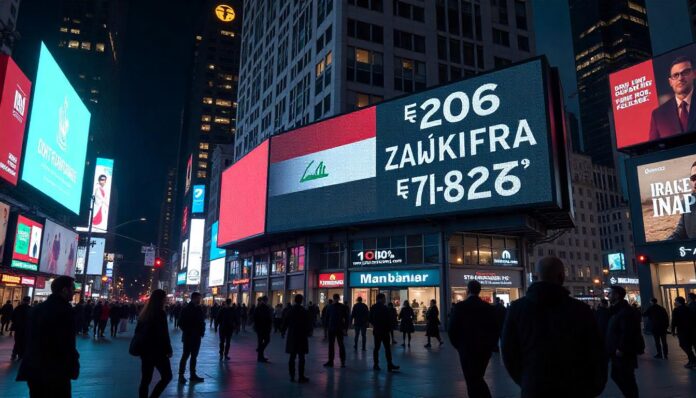Introduction to the Iraqi Dinar
The Iraqi Dinar has captured the attention of investors, economists, and curious individuals alike. With a history as rich and complex as Iraq itself, this currency holds a unique place in the global financial landscape. As discussions around its future value continue to swirl, many are wondering: What does 2025 have in store for the Iraqi Dinar?
In this blog post, we will delve into the fascinating history of the dinar while exploring key factors influencing its value. Alongside insights from experts in finance and economics, we’ll navigate potential scenarios that could unfold by 2025. Whether you’re considering investing or simply want to understand more about this intriguing currency, you’re in the right place. Join us as we unravel what lies ahead for the Iraqi Dinar!
History of the Iraqi Dinar
The Iraqi Dinar has a rich and tumultuous history, reflecting the nation’s complex socio-political landscape. Introduced in 1932, it replaced the Indian Rupee as Iraq’s official currency.
Initially tied to the British pound, its value fluctuated significantly over the decades due to political instability and economic challenges. The dinar experienced severe devaluation during the Gulf War in the early 1990s.
In 2003, following the U.
S.-led invasion of Iraq, a new series of banknotes was issued. This move aimed to stabilize the economy amidst chaos and restore confidence in financial transactions.
As Iraq began rebuilding itself post-war, so did discussions about reviving its currency’s strength. Each phase of its evolution reflects broader national struggles for stability and growth within an ever-changing geopolitical environment.
Factors Affecting the Value of the Iraqi Dinar
The value of the Iraqi Dinar is influenced by several key factors. Political stability plays a significant role. A government that maintains order can boost investor confidence and enhance currency strength.
Economic conditions matter too. Oil prices directly impact Iraq’s economy, as oil exports are a primary revenue source. Fluctuations in global oil markets can lead to changes in dinar valuation.
Inflation rates also contribute to the dinar’s worth. High inflation erodes purchasing power, making investments riskier for both locals and foreign investors.
Additionally, market perception shapes currency value. Speculation about future reforms or economic policies can cause volatility.
International relations cannot be overlooked; favorable ties with other nations often strengthen currency trustworthiness on the world stage. Understanding these dynamics is crucial for anyone considering investment in the Iraqi Dinar.
Expert Opinions on the Future of the Iraqi Dinar in 2025
Experts have varied opinions on the future of the Iraqi Dinar by 2025. Some analysts are optimistic, pointing to Iraq’s vast oil reserves and potential economic reforms as catalysts for growth. They believe that an uptick in international relations could bolster investor confidence.
Conversely, other financial experts urge caution. Political instability remains a significant concern, which could hinder any positive trajectory for the currency. The ongoing challenges within governance and infrastructure pose risks that cannot be overlooked.
Additionally, fluctuations in global oil prices may play a crucial role in determining the dinar’s stability. A drop in oil demand could negatively impact Iraq’s revenue and subsequently affect its currency valuation.
Each opinion reflects a nuanced understanding of both local conditions and global influences at play. Investors must carefully consider these perspectives before making decisions regarding their involvement with the Iraqi Dinar.
Potential Scenarios for the Iraqi Dinar in 2025
As we look towards 2025, several potential scenarios could shape the future of the Iraqi Dinar.
One optimistic outlook suggests that greater political stability and economic reforms may bolster investor confidence. A thriving oil sector and increased foreign investments might lead to a stronger dinar, enhancing its value on international markets.
Conversely, ongoing geopolitical tensions in the region could hinder growth. If instability continues, it may prevent necessary reforms from taking place, resulting in stagnation or further depreciation of the currency.
Another scenario involves fluctuating global oil prices. Since Iraq’s economy heavily relies on oil exports, any significant changes could directly impact its currency valuation.
Advancements in digital currencies might position Iraq to modernize its financial systems. This move could either enhance or challenge traditional currency values depending on how well it’s implemented.
Risks and Considerations for Investing in Iraqi Dinar
Investing in the Iraqi Dinar comes with significant risks that potential investors should carefully evaluate. Political instability has long been a concern in Iraq, and changes in government or policy can dramatically impact currency value.
Additionally, fluctuating oil prices heavily influence the economy. Since oil is a primary revenue source for Iraq, global market shifts can lead to unpredictable swings in the dinar’s value.
Another critical factor to consider is liquidity. The Iraqi Dinar is not as widely traded as more established currencies, making it harder to sell at desired rates when needed.
There’s the risk of scams. Many fraudulent schemes promote high returns on investments in the dinar without legitimate backing. It’s essential to conduct thorough research and consult financial experts before diving into this volatile investment opportunity.
Conclusion: Should You Invest in Iraqi Dinar?
The future of the Iraqi Dinar is a topic that garners much interest among investors and economists alike. As we approach 2025, several factors will play a crucial role in determining its value.
Understanding historical trends can provide insights into potential outcomes. The Dinar has experienced fluctuations due to economic policies, geopolitical tensions, and global market influences. These elements are still very relevant today.
Expert opinions vary widely. Some analysts believe that with consistent government reforms and stabilization efforts, the Dinar could appreciate significantly. Others caution against overly optimistic predictions, citing risks inherent in political instability and regional conflicts.
Potential scenarios for 2025 range from significant appreciation if the Iraqi economy continues on an upward trajectory to stagnation or even depreciating value if challenges persist. Investors must assess these possibilities carefully.
Investing in the Iraqi Dinar carries both promise and risk. Those willing to navigate this complex landscape need to do their homework thoroughly before making any financial commitments.
Whether you should invest in the Iraqi Dinar depends on your risk tolerance and investment strategy. Stay informed about current events affecting Iraq’s economy while considering expert analyses as part of your decision-making process.













